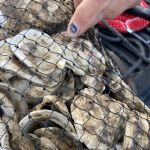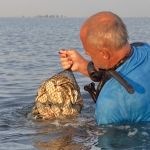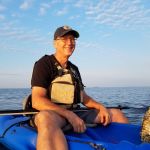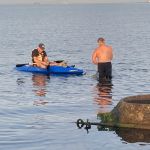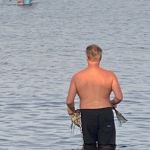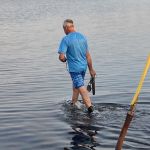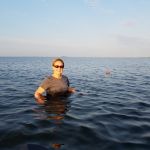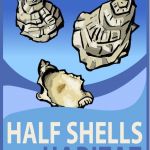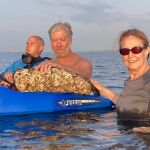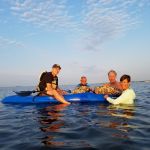Great South Bay Oyster Project
Photo Gallery
Recent Progress
Volunteer
Habitat Restoration

Habitat Restoration
We advocate for healing the creeks that feed our bay, for bay-friendly yards, for helping to return a shellfishing industry to the Great South Bay, and for the deployment of modern wastewater treatment technologies to address the problems caused by 500,000 cesspools and septic tanks, as well as the 197 large scale septic systems in malls, apartment complexes and locally.
Volunteer
Lend a hand! Join our Oyster Project Team and help revive The Great South Bay.
Partnering With Oyster Growers
Of course, nothing happens without cleaner water. That is why getting rid of our cesspools and septic tanks, healing our creeks, tackling runoff, and practicing natural lawn care is so important.
Please contact us with any suggestions you may have. You can also donate our efforts. We want to apply the latest techniques in aquaculture to revitalize our bay, our economy and our local culture.
We advocate for healing the creeks that feed our bay, for bay-friendly yards, for helping to return a shell fishing industry to the Great South Bay, and for the deployment of modern wastewater treatment technologies to address the problems caused by 500,000 cesspools and septic tanks, as well as the 197 large scale septic systems in malls, apartment complexes and locally.
Where You Can Get Fresh, Long Island Blue Point Oysters
- Neguntatogue Oysters (Lindenhurst) – call or text Keith & Nicole at 631-275-8046
- Blue Island Oysters (Sayville)- Call Chris at (631) 563-1330 for availability
- Maris Stella Oysters (Captree) – call or text Sixto at 516-939-5545
- Little A’s (Bay Shore) – call or text Michael at 917-526-1900
- Red Tiger (West Islip) – call or text Lou at 646-228-6273
The Making Of An Oyster Sanctuary
Site Evaluation
Establishing the Sanctuary
Enhancing and Measuring for Success
Recent Progress On Habitat Restoration
Shellfish Bed Closings Throughout Long Island — Again, and Thoroughly Predictable Because Our Ground Water is Filthy With Septic Tank Seepage, Lawn Fertilizer and Storm Run Off
1. Towns of Hempstead and Oyster Bay (south shore): All that area of Hempstead Bay, East Bay and South Oyster Bay and their tributaries.
2. Town of North Hempstead: All that area of Hempstead Harbor lying southerly of a line extending northeasterly from Prospect Point to Matinecock Point.
3. Town of Oyster Bay (north shore): All of Hempstead Harbor, Oyster Bay Harbor and all of Cold Spring Harbor lying southerly of a line extending easterly from the stone house on Plum Point (Centre Island) to the northerly side of the beach pavilion at West Neck Beach (Town of Huntington) on the eastern shore of Cold Spring Harbor.
4. Towns of Babylon and Islip: All that area of Great South Bay and its tributaries lying westerly of the northbound span of the Robert Moses Twin Causeway bridges.
5. Towns of Islip and Brookhaven (south shore): All that area of northern Great South Bay, including Nicoll Bay and Patchogue Bay, lying northerly of a line* extending easterly from the southern base of the northbound span of the Robert Moses Causeway (north side of Captree Island) to Buoy R “6” Fl R 4s (West Channel) to Buoy R “4” Fl R 2.5s (south of Nicoll Point) to Buoy GR “EN” Fl (2+1) G 6s (Nicoll Bay) to Buoy R N “30” (south of Green Point) through Buoys R N “32”, R “34” FL R 2.5s and G “35” Fl G 4s (south of Blue Point) to Buoy R A36″ Fl R 6s (south of Swan River) to Buoy G C A37″ to Buoy G “1” Fl G 2.5s (south of Howells Point) thence proceeding southeasterly from buoy G “1” Fl G 2.5s to the flag tower at Bellport Beach (located on the barrier beach, Fire Island). (*Also known as the East-West Buoy Line)
6. Town of Brookhaven (south shore): All of Bellport Bay lying easterly of a line extending southerly from Howells Point through Buoy G “1” Fl G 2.5s, thence proceeding southeasterly to the flag tower at Bellport Beach; and, all of Moriches Bay and its tributaries.
7. Town of Brookhaven (north shore): All of Stony Brook Harbor, Port Jefferson Harbor and Mount Sinai Harbor.
8. Town of Huntington: All of Northport Bay, Duck Island Harbor, Centerport Harbor, Lloyd Harbor; and, all that area of Huntington Bay lying southerly of a line extending easterly from the southernmost point of East Beach (at the north side of the mouth of Lloyd Harbor) to the southernmost point of West Beach (the southern tip of Sand City beach); AND, all that area of Cold Spring Harbor, lying southerly of a line extending easterly from the stone house on Plum Point (Centre Island) to the northerly side of the beach pavilion at the Town of Huntington West Neck Beach on the eastern shore of Cold Spring Harbor.
9. Town of Smithtown: All that area of Stony Brook Harbor and its tributaries.
10. Town of Riverhead: All that area of Flanders Bay and its tributaries.
11. Town of Southampton: All that area of Flanders Bay, Moriches Bay, Quantuck Bay, Quantuck Canal and Shinnecock Bay and all other creeks, bay, harbors, coves and tributaries within the Town of Southampton.
12. Town of East Hampton: All that area of Northwest Harbor, Three Mile Harbor, Accabonac Harbor, Napeague Harbor, Lake Montauk and all other creeks, bay, harbors, coves and tributaries within the Town of East Hampton.
13. Town of Shelter Island: All that area of Coecles Harbor, Dering Harbor, West Neck Harbor, Northwest Harbor and all the creeks, bay, harbors, coves and tributaries within the Town of Shelter Island.
14. Town of Southold: All that area of Cutchogue Harbor, Pipes Cove, Orient Harbor, Hallock (Long Beach) Bay, Hay Harbor, West Harbor and East Harbor on Fishers Island; and, all other creeks, bay, harbors, coves and tributaries within the Town of Southold.
The Breach Report 6-11-13
With the twice daily flushing of Bellport Bay from the tides and The New Inlet, we are seeing bay bottom hidden for decades, flounder, bluefish, weakfish. And unlike Shinnecock and Moriches Bay, which don’t properly flush, and where nitrogen pollution from septic tanks, lawn fertilizers and farms gathers to feed algal blooms, and with increasing intensity year by year, we have thus far seen NO BROWN TIDES.
SCERP Cities Brown Tides in Moriches, Quantuck and Shinnecock, but None in The Great South Bay, Perhaps Because of The New Inlet
*Brown tide emerges in Moriches, Quantuck, and Shinnecock Bay, but not in Great South Bay; Presence of new ocean inlet in Great South Bay may help keep brown tide in check*
Tropical Storm Andrea Will Bring Winds and Rain to LI
We at the Save the Great South Bay know that residents along the South Shore of Long Island are vulnerable and nervous every time a named storm comes our way. That’s why it is important to be ready and aware of what to expect. Tropical Storm Andrea will be more of a wind driven tropical rain event than a flooding event according to the National Weather Service. This tropical low pressure system will pass to our south and east and track northeast. With it, it will bring torrential rains, thunderstorms, wind and heavy surf. The winds around a low pressure system rotate inward toward the central point of low pressure counterclockwise. That is why with a storm track like Andrea’s, winds will go from South, to SE, to East, then Northeast as it departs our region North eastward. The worst of the winds will be from Friday night to Saturday morning. Winds will be mostly out of the east during this time and turn toward the west into Saturday. Residents along the South Shore prone to coastal flooding can expect the worst of the storm Friday night into Saturday morning for the New Moon astronomical tide.
Update: Save The Great South Bay CORRECTLY Predicts: Widespread Beach Closings Throughout Long Island in the Wake of Tropical Storm Andrea
You really don’t need a crystal ball for this prediction: Tropical Storm Andrea will dump up to three inches of rain on Long Island Friday into Saturday. That rain will in turn wash septic water into our rivers, streams, ponds, and bays, and with that will force the closure of a number of Long Island beaches over this coming weekend. These days, a good downpour brings many millions of gallons of contaminated, septic water from the land to the water. With over 100,000 septic tanks in Suffolk County, when it rains our waters suffer. The bacteria counts explode and our beaches become hazards. The water literally becomes dangerous to be in. So as night follows day, a heavy rain will close the beaches. The same thing happened on Memorial Day Weekend. Heavy rains, it was reported, closed the following beaches:
Meet a Clam Digger – Steve Kuhn
Via Andrew Kozak, a graduating senior at Stony Brook University. His senior project concerned the collapse of the clamming population in The Great South Bay, and with it a way of life. His project may be viewed at www.longislandclams.com.

